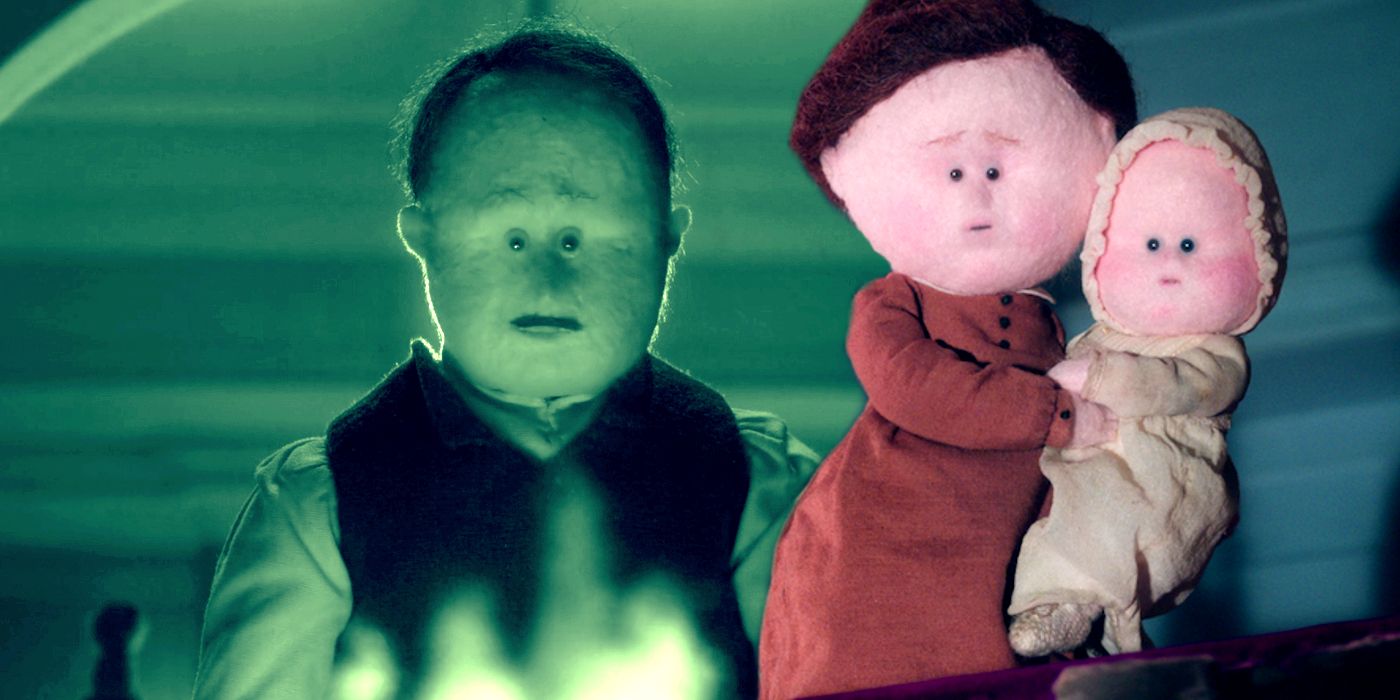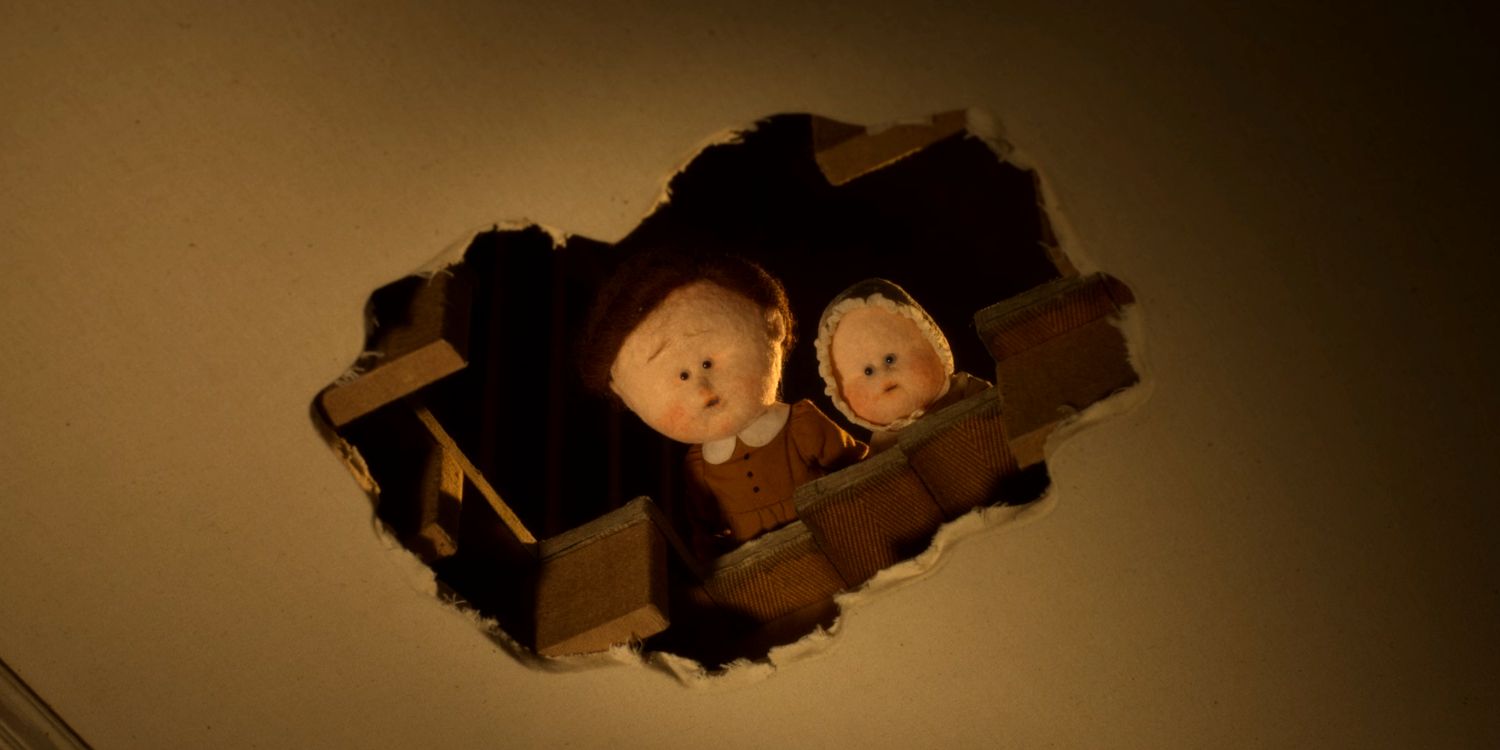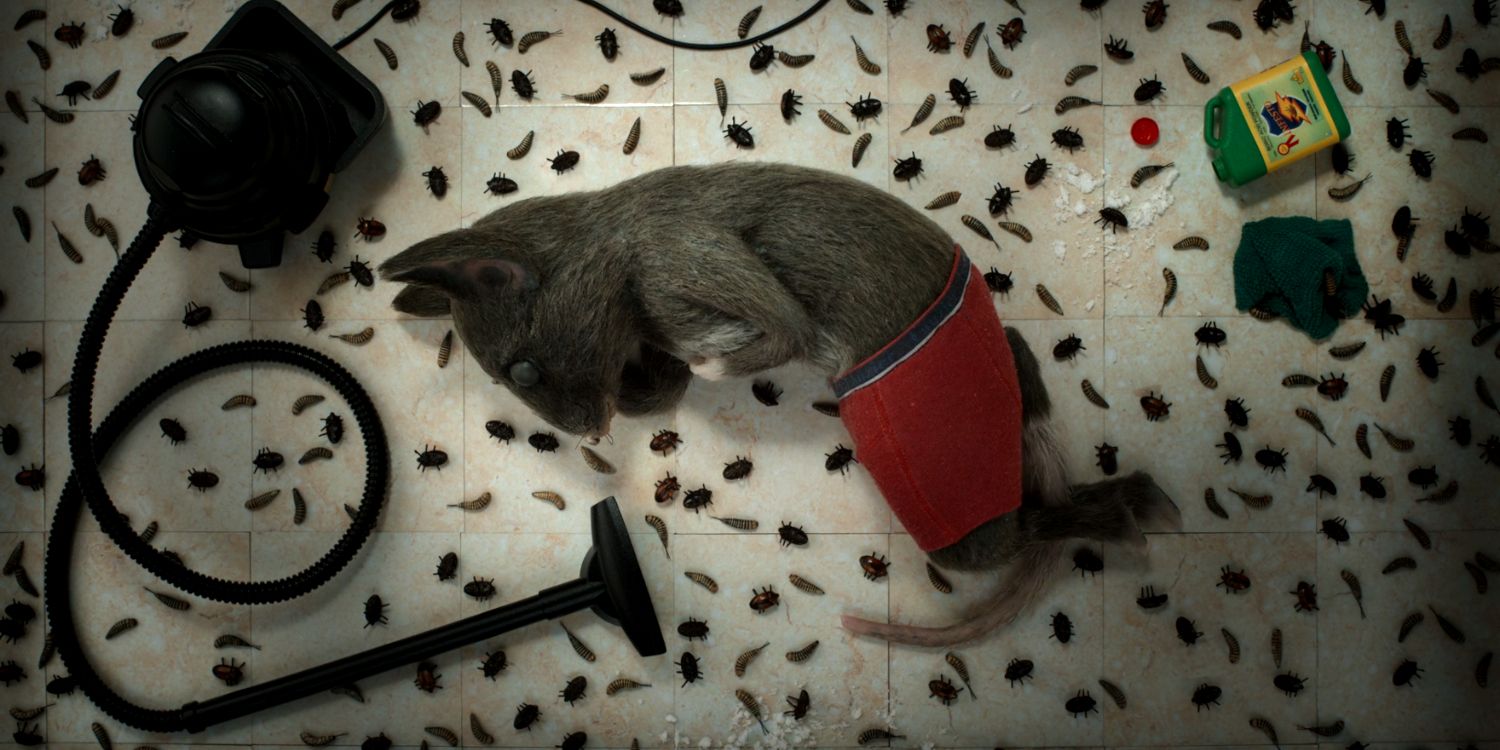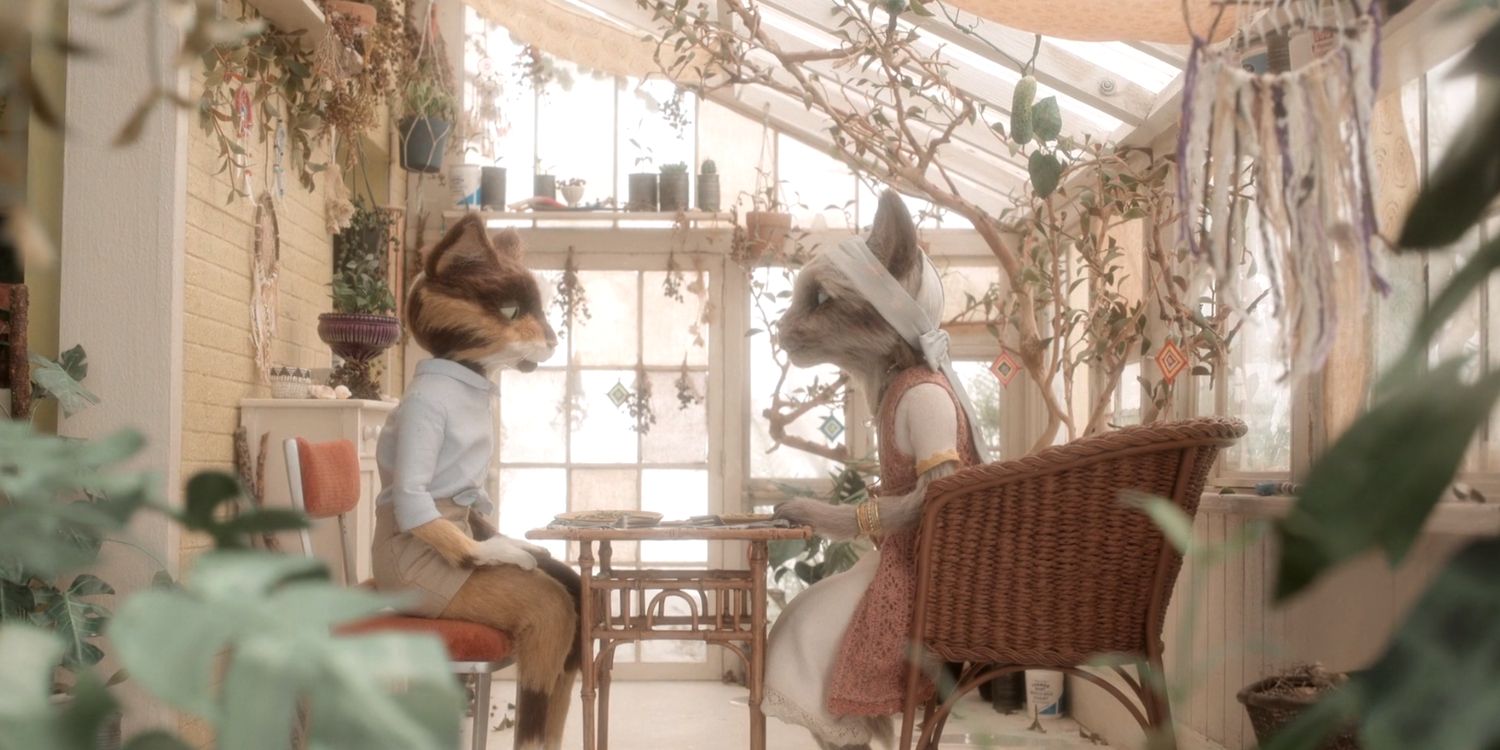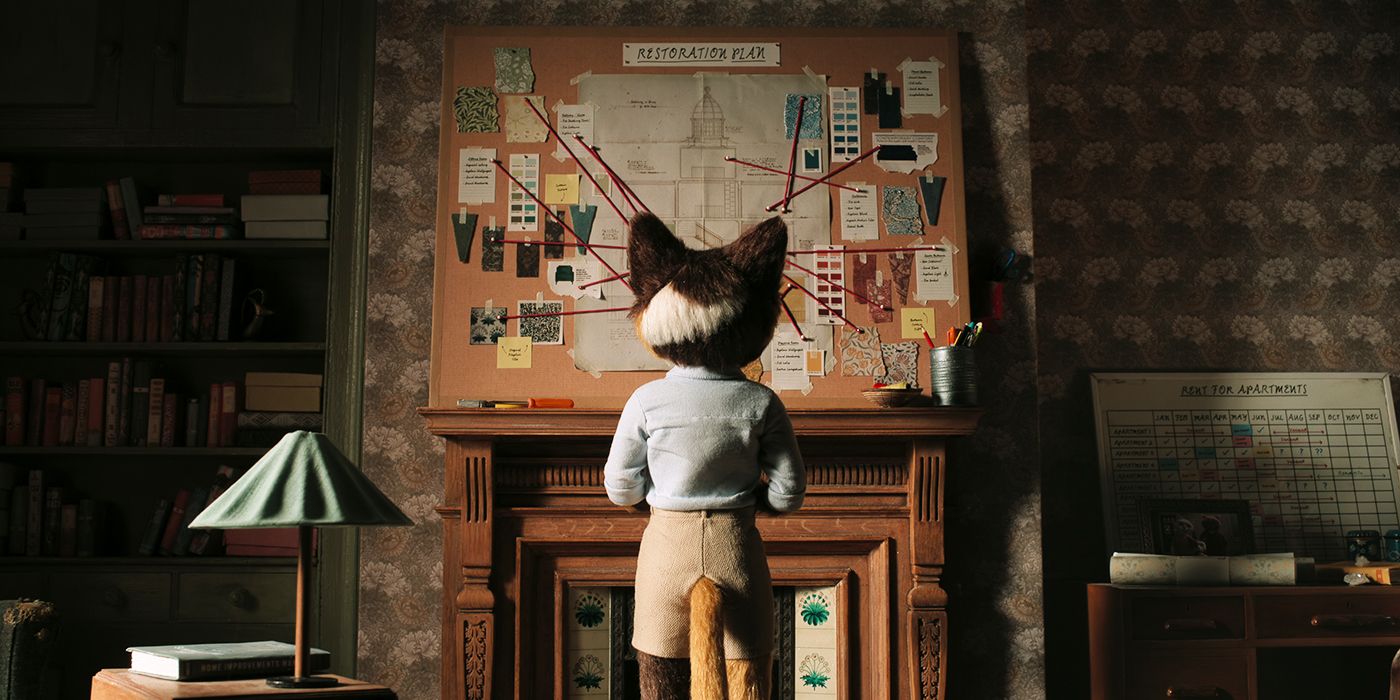Warning: Contains MAJOR SPOILERS for The HouseNetflix's stop-motion anthology, The House, is creepy and complex, and all three story endings require careful explanation. The House film features three separate tales linked only by their themes and setting: the titular house. This anthology series combines detailed and intricate stop-motion animation with a dark tone and creepy atmosphere in order to create a truly unique experience.
The House also features some subtle and, at times, even political themes. The Netflix series tackles issues such as class, materialism, and climate change. Combined with the horror elements of the first two stories, The House develops into something much more mature than one might expect from stop-motion animation. Each of the three short films features an ambiguous ending that requires consideration of the ideas presented more so than a straightforward understanding of the plot.
The first story in the House anthology recounts the strange events that occur after the patriarch of a family makes a deal with a wealthy architect. They move into a newly-built house, in exchange for their own more modest home. The second film takes place in the modern-day and is about a property developer struggling to combat the house's bug infestation while dealing with the arrival of two unwanted guests. The final short film is set in a future where the planet has experienced a seemingly apocalyptic flood. Rosa, the feline landlord of a house barely above water level, is frustrated by her two tenants' refusal to pay rent. She must then contend with the arrival of an eccentric visitor. Here's a detailed explanation of all three The House film endings.
Part 1
The House's first story, titled "And heard within, a lie is spun," takes on the atmosphere of an old folk tale and ends in a grim manner reminiscent of those kinds of stories. After being neglected by their parents, Mabel and Isobel, the two children of the family, escape the burning mansion after their parents are transformed into furniture; the father into a chair, and the mother into curtains. The trajectory of this horrific fairy tale outlines a clear moral. The opening of the film shows that despite living in poverty, this family is close-knit and loving. It is only after a visit from some affluent extended family, who are eager to belittle the family and their home, that Raymond is shown drinking and depressed. He and Penny subsequently agree to the architect's strange deal. Their decision is clearly born from a feeling of shame regarding their economic circumstances and a strong desire to live up to the family's expectations. While Mabel is shown as being perfectly content with their life, the opening scene clues the viewer into how this materialism has been internalized even by her. She is seen playing with a large dollhouse, imagining a conversation between her and her aunt Eleanor, in which she compliments the "lovely house."
It's clear that this The House film story is about an attachment to superficial signifiers of wealth and opulence, something that comes at the expense of the characters' humanity. They become the things they desire. Aunt Eleanor had passive-aggressively commented on the curtains in their "dismal" house, something Penny clearly took to heart as she then spends all her time sewing curtains once they move into the mansion. Whereas Raymond starts burning the furniture from their old house, in a desperate attempt to rid himself of his past. Of course, this fire will eventually consume everything. However, the ending of The House's first tale is somewhat hopeful in that it allows for the possibility of the children, the younger generation, to escape this self-destructive materialism, as Mabel and Isobel are shown surviving this haunted house.
Part 2
Part 2 of The House, "Then lost is truth that can't be won," features perhaps the most nihilistic ending of all three stories. The protagonist, a developer, after being completely overrun by unwanted guests, seemingly reverts to his animalistic nature. Along with the rest of the house's new inhabitants, he consumes his surroundings — furniture, decorations, and various commodities. It seems that the developer has given in to a primal urge, something that comes in stark contrast to his previous behavior, which showed the character as desperate to achieve his goal of refurbishing and selling this house. This sudden turn indicates that the character has experienced a complete breakdown. He is last seen scurrying into a tunnel in the rotisserie oven.
While the story's bleak ending, reminiscent of Kafka's Metamorphosis, seems strange and surreal (as do each of the three endings in The House anthology), its meaning is quite clear. The rat spends the entire film trying to fend off a vermin infestation, as well as get rid of two unwanted guests (who also have the appearance of giant bugs). He is obsessed with renovating this house and making it presentable. This property becomes his personal project, which causes him a lot of anxiety. This ending simply shows the natural consequence of that gradual buildup. He abandons the superficial pursuit of finding self-worth in material things and instead reverts to a kind of state of nature, where everyone is seemingly free to do and consume whatever they want. The idea of "property" is non-existent. There's also the likely possibility that all of this surreal and ambiguous ending is simply a hallucination caused by the boric acid the rat has been using to kill the bugs (the chemical that sent him to the hospital). Perhaps this is all a dream he is experiencing at the hospital.
Part 3
This final story featured in Netflix's The House anthology, titled "Listen again and seek the sun," ends with the landlord, Rosa, finally letting go of her dedication to the house, deciding instead to sail away with the other characters. The story opens with Rosa listing the tasks she must perform to maintain the building. She is seen struggling to stick wallpaper to the walls, representing her struggle to keep on top of all the different jobs that need doing. She is portrayed as determined, but also frustrated. Rosa is clinging to outdated ideas about property and money that don't really make sense in this new world. Her tenant, Elias (yet another anthropomorphic animal), makes this apparent to her, noting that the water level will soon rise and start to flood the house, but she remains committed to the idea of finding new tenants. It is only after Elias' departure that Rosa realizes he could draw, indicating that her fixation on being a landlord had prevented her from seeing the full character of her tenants. She perceived them as nuisances who didn't pay their rent on time.
Talking to Jen, Rosa reveals that her plan was to make "a home with good memories for myself." Jen advises that she should love her past, but "travel on." Whereas The House's first story shows the beginning of the materialist mindset, born out of the frustrations of class envy, and the second film presents something of an overreaction to the pressures of modern life, perhaps retreating too far in the other direction, this final story shows the overcoming of our present-day materialism. Rosa must move on and learn to grow out of her fixed vision of the world, and so the story ends with her literally uprooting her habitat and moving forward, in search of a different kind of life.
How The House's Endings Are Connected: The Movie's Real Meaning Explained
The plot of the Netflix anthology series The House has a lot to say about consumerism, capitalism, and tenancy. The themes of the animated features are hot-button current topics in the United States today, and all three are connected by a common thread. The first story depicts the rise of consumerism, which is rolled in with the setting. While no concrete time frame is given, it looks to be set during the Gilded Age (around the same time as Downton Abbey), a period in which consumerism was on the rise with the advent of department stores and catalogs. Class division during this time was particularly palpable, and Raymond feels the only way to combat his status is to buy into the new house. Becoming consumed with the capitalist spirit, Raymond and Penelope burn all of their old possessions, and the fire inevitably leads to their downfall.
Like the message of Don't Look Up, consumerism and capitalism also lead to the downfall of Part 2's unnamed developer. As part of the literal "rat race," the landlord does his best to flip and sell the house, but the stress of the housing market drives him insane. Rather than just sell the house, he lets the unwanted guests take over and fully succumbs to his madness, suggesting that the only course consumerism and capitalism can lead to is insanity. While Rosa from The House Part 3 doesn't face the same bleak circumstances as the other characters, she's also driven to make money and feed the consumerist machine in a world plagued by climate change disasters. All in all, the three endings are linked to the subjects' futile attempts to live a consumerist lifestyle in a capitalist context. The absurdity and futility of trying to live a stable, fulfilling life in the grip of a crushing economic system are what drive Netflix's The House film forward and bring bitter endings to each chapter.

